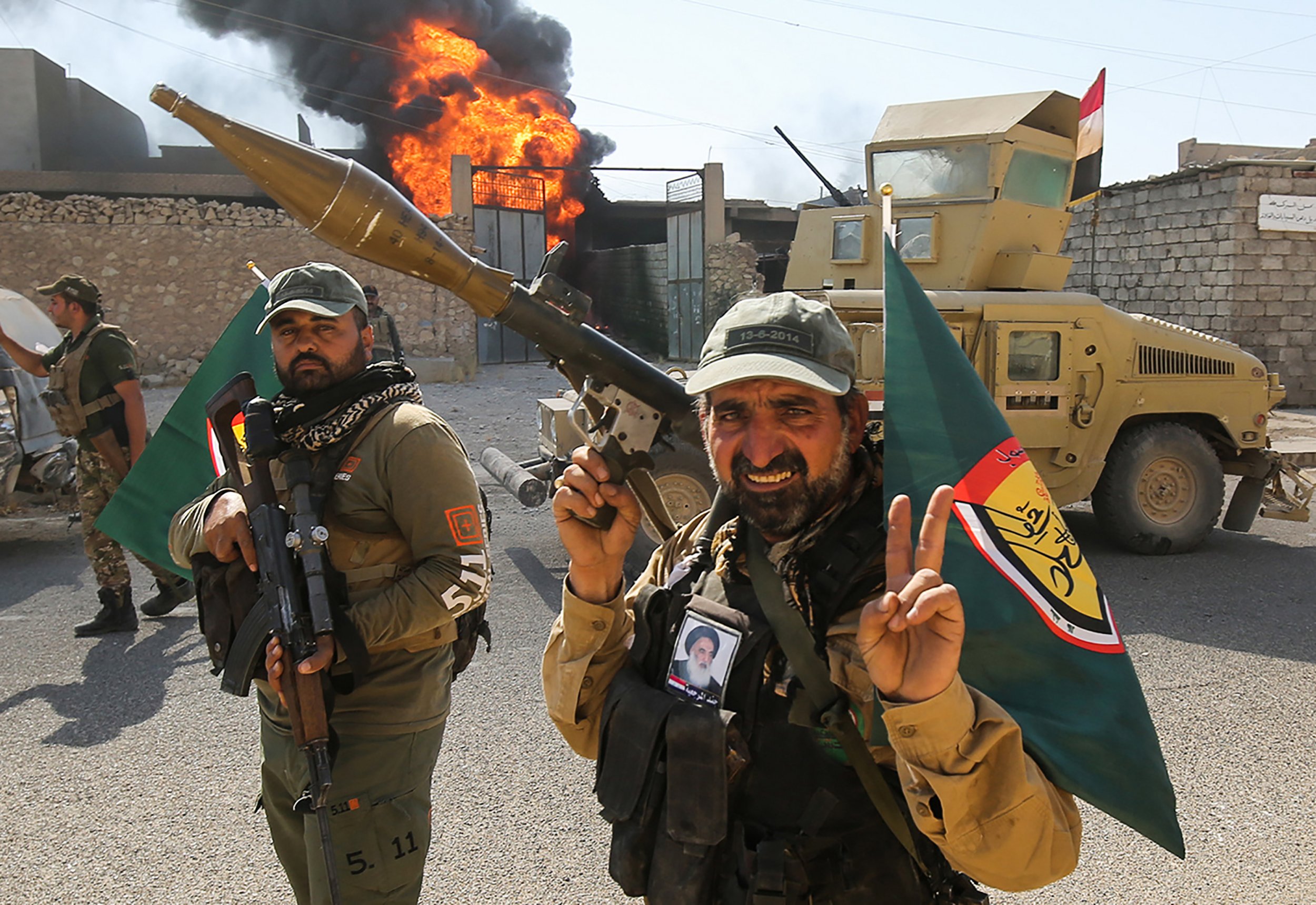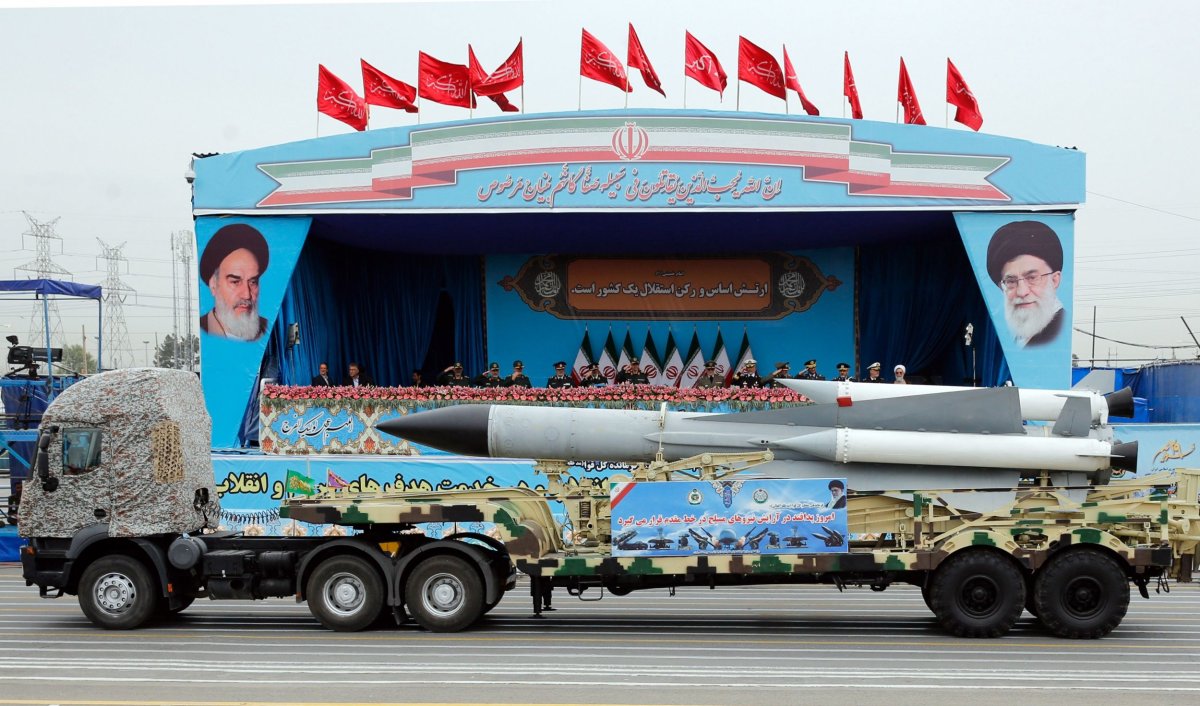
A U.S. aircraft carrier is headed to the Persian Gulf, B-52 bombers have been deployed to the region and the U.S. military has made plans for a possible war with Iran. President Donald Trump has been anti-Iran since he entered the Oval Office, but with some of his more moderate advisers out and more hawkish advisers in, the U.S. has been flirting with the idea of a new military conflict in the Middle East.
When National Security Adviser John Bolton announced the new deployments last week, he told reporters that the U.S. had intelligence suggesting Iran or its proxies were preparing an attack on American interests.
"The United States is not seeking war with the Iranian regime," Bolton said. "But we are fully prepared to respond to any attack, whether by proxy, the Islamic Revolutionary Guard Corps, or regular Iranian forces." For its part, Iran has denied the American suggestion and warned that Washington was operating on false intelligence.
U.S. military might dwarf hat of Iran, but Tehran retains plenty of ways to hurt American forces and interests in the Middle East, and even farther afield. Whether through direct military action or through its proxies, Iran remains a potent threat.

Iran's location on the Strait of Hormuz gives it direct access to one of the most vital strategic waterways in the world. Some 20 percent of all oil traded worldwide travels through the strait, which at its narrowest point is only 24 miles wide.
Iran does not require a world-leading navy to threaten—or even close off—the channel, potentially crippling the global supply of oil, and economies worldwide, which the regime has regularly threatened to do in the event of a military conflict with the U.S. or its allies.
Given its technological inferiority when compared with its U.S. rivals, Iran would have to use asymmetric and stand-off military measures in any effort to close the strait.
Naval mines could make the waterway treacherous for commercial and military shipping, funneling enemy vessels into convenient kill zones for Iranian forces. The country's indigenously built submarines could also harass ships that manage to pick through the minefields. Iran does not publicly disclose the total number of submarines in its fleet, but The Associated Press noted it is believed to have around 12 light and three Russian-made submarines.
And from the shoreline, Iran's anti-ship missiles could inflict major damage on U.S. fleets. The Khalij Fars—meaning Persian Gulf—supersonic missile has a range of about 185 miles, is self-guided, and can maneuver during flight to lock onto a moving target. The weapon is relatively cheap, simple and can be deployed in swarm attacks. While U.S. ships have defenses against such weapons, the sheer number of missiles that could be fired would present a huge danger to naval forces in the Strait of Hormuz.
The Iranian navy, while much smaller and less advanced than the U.S.'s, must not be discounted. Though Iran would never be able to go toe-to-toe with the Americans, creative use of the country's fleet could inflict huge casualties on adversaries.
In a 2002 war game, for example, commanders used Iran's large fleet of small speedboats to swarm U.S. forces with conventional and suicide attacks. Combined with a massive salvo of cruise missiles that overwhelmed American defenses, the simulated battle lasted just one day and saw 16 major enemy warships sunk, including an aircraft carrier, cruisers and amphibious vessels.
Iranian forces might also engage in sabotage operations against oil tankers in a bid to destabilize global oil supplies and tank markets. This week, multiple oil tankers were sabotaged off the coast of the United Arab Emirates. Iran has denied involvement, but such an operation illustrates well how a nation state could target commercial shipping.
Iran's proxies give it a global reach, allowing its leaders to harass and attack enemies without having to commit regular forces. In Yemen, Houthi rebels—reportedly funded and financed by Iran, though both deny links with each other—are firing ballistic missiles and launching drone attacks at Saudi targets. The U.S. claims that Iran supplies the Houthis with their most sophisticated missiles, allowing fighters to threaten airports, oil refineries and other sensitive targets deep inside the kingdom.

Houthi fighters have also used shore-based missiles to attack the Saudi navy and commercial shipping passing Yemen. Such audacious operations offer a preview of how Iranian regular forces might respond to a full-blown conflict in the Persian Gulf.
In Lebanon, the militant Hezbollah organization offers Tehran a direct route of attack against Israel, arguably America's staunchest and most significant regional ally. Iran funds and arms Hezbollah, which operates in Lebanon, including around the border with Israel. The organization is well armed and well trained, with tens of thousands of rockets that can hit anywhere in Israel. Its members have been fighting in Syria in support of President Bashar al-Assad, giving Hezbollah's troops valuable combat experience.
And in the Gaza Strip, Iran also funds Hamas—which rules the coastal enclave—and the Islamic Jihad. Both regularly fire rockets into Israel and have targeted Israeli soldiers along the border. In the event of a conflict with the U.S., Tehran may increase funding to these groups or pressure them to retaliate against Israel to punish the U.S.
U.S. soldiers deployed across the region could also become targets. In Afghanistan, Iran has been accused of funding the Taliban, which currently has government forces on the back foot as the U.S. attempts to end its 18-year deployment to the country.
And in Iraq, Iran still holds huge sway over the powerful Shiite militias that were so instrumental in defeating the Islamic State militant group (ISIS) and driving it from the country under the umbrella of the Popular Mobilization Forces. Following the U.S. invasion of Iraq in 2003, Iran funded and armed many groups fighting the American occupation. Many such groups evolved into the powerful militias in Iraq today.
Hundreds of American troops were killed by Iranian-supplied weaponry during the occupation phase of the Iraq War, particularly so-called "explosively formed penetrators"—anti-armor weapons containing shaped charges that propel an aerodynamic metal slug toward a target when detonated.
With tensions rising between Washington and Tehran, Iran may try to use the Iraqi militias against American forces. Many of the troops once fought the American occupiers, and recent tension between the U.S. and the militias shows the scars and mistrust left behind by years of guerilla warfare.
Cyberwarfare is another asymmetric option for Iran. The nation is not considered as effective as the U.S. and Israel in this area, but significant energy and resources are being invested in this capability.
Iran was caught flat-footed in 2010 by the U.S.-Israeli Stuxnet attack on the Iranian Natanz nuclear facility, which destroyed about 20 percent of all centrifuges at the site. Since then, the country has been working enthusiastically to close the gap. According to Israel Defense Forces officials, Israel's military fights off hundreds of Iranian attacks every day. Tehran has also used its increasingly sophisticated cyberarm to target the U.S. and other regional adversaries, stealing intelligence and conducting illegal surveillance.
Iran might simply choose to keep its powder dry entirely, and avoid a military response to American threats. In this case, Tehran could move to isolate the U.S. diplomatically through talks with European leaders. Relations between the U.S. and its traditional European allies are the weakest in recent memory, one factor being a split on supporting the Iran nuclear deal. In the event of conflict, Iran would no doubt seek to pile the pressure on the damaged transatlantic alliance, as it has done with the nuclear deal.
Uncommon Knowledge
Newsweek is committed to challenging conventional wisdom and finding connections in the search for common ground.
Newsweek is committed to challenging conventional wisdom and finding connections in the search for common ground.
About the writer
David Brennan is Newsweek's Diplomatic Correspondent covering world politics and conflicts from London with a focus on NATO, the European ... Read more
To read how Newsweek uses AI as a newsroom tool, Click here.








